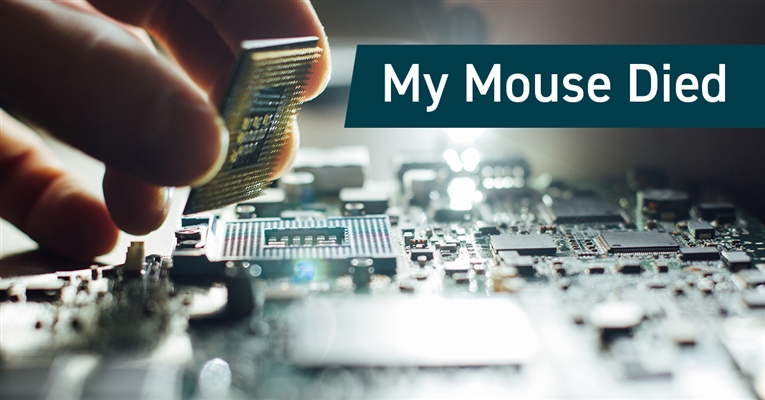My mouse died the other day. The one that controls that little cursor on the computer screen. Determined that the batteries were dead. So immediately went to the drawer. The drawer that everyone has in their household. The junk drawer. The one that holds miscellaneous stuff. Some basic tools, a couple of screwdrivers, plus and minus. Almost empty rolls of tape, expired coupons, receipts—when and why did I buy that? Note, the contents of your drawer may vary and change over time, but it is the first place you go to find that item to complete your repair or project.
Found a pack of batteries, expired and wrong size. Got into the car and went down to the store. The local grocery store, searched for the household items aisle, located the batteries—what the heck, grabbed the cheaper off-brand, not the copper topped ones. Went home and revived the mouse. An hour lost out of my hectic day.
Those who design and engineer products for a living, experience a similar loss of time and productivity in searching in their company’s “drawers” for that item or component meeting the requirements of a design. Memory searching, rifling through old notebooks, querying of colleagues, who then search their own memories, rifle and query, perusing spreadsheets, querying an ERP system that may or may not connect to their PDM/PLM systems and reflects a less than adequate or outdated PDM system, often with less than satisfactory results. I think this will work? Sorry, discontinued, or backordered, or we used it here, but we don’t really know how well it worked, we really don’t know how it performed once serialized and employed in the field. We don’t have a Digital Twin to refer to.
All the above becomes more and more challenging as the complexity of high-tech products naturally and organically evolves. Products today are composed of systems of systems composed of mechanical and electrical sub-systems, all enabled by the increasingly dominant role of software. Governance and regulations also increase as electronic components must comply with sourcing, materials, and environmental standards for specific geographies. Component engineers walk a fine line in conforming to more and more innovative designs, designs that are needed for a business to remain competitive, and the decisions that must be made in choosing the right components to satisfy all stakeholder requirements.
Engineers and sourcing professionals working in the High Tech industry are often in a reactive mode when weighing their choices and decision making:
- Have we previously used this component and has it been successfully implemented into a design, manufactured, and deployed?
- What are the current specifications? Have they changed? When is end-of-life?
- The component’s been authorized to purchase. Do we have any available? Enough to finish production?
- Is it easier to not attempt to understand these issues and simply call for a new component— introducing complexity into upstream design work and downstream manufacturing, supply, and maintenance?
Fortunately for component engineers and forward thinking, innovative design teams, there is a database of over half a billion electronic, electro-mechanical components supplied by over four thousand manufacturers. The IHS Markit database is available for up-to-date technical information, obsolescence, availability, pricing, and certified compliance. The really fortunate can access this database via a complete integration with the Aras Innovator resilient platform for digital industrial applications.
The integrated solution in Aras Innovator—Component Engineering, allows easy identification of candidate parts, identifies parts already in use on existing design, and shows parts from preferred vendors. Once identified, parts are automatically introduced into approval workflows and, when obsolescence occurs, the change management processes are activated within Aras Innovator. Instead of frantically searching through the engineering historical drawer of incomplete and out-of-date databases and spreadsheets, you have access to a current, complete resource that can save time and money, manage obsolescence, reduce risk of non-compliance, shorten your supply chain, all while increasing productivity.

